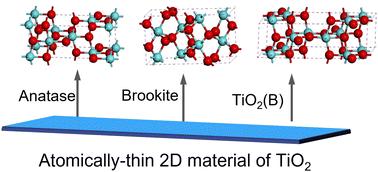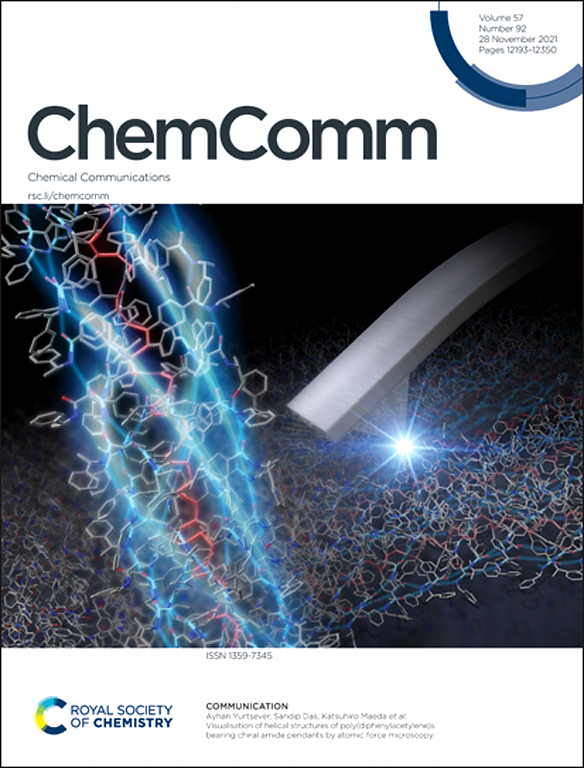自底向上制备超薄TiO2纳米片的方法。
IF 4.2
2区 化学
Q2 CHEMISTRY, MULTIDISCIPLINARY
引用次数: 0
摘要
原子级薄的二维(2D)材料是探索表面化学、各种催化和设备中不同寻常的物理和化学特性的理想平台。大多数二维材料都是通过自上而下的剥离从固有层状结构的化合物中衍生出来的,但直接制备非层状材料的超薄纳米片通常具有挑战性。TiO2 包含至少 8 种非层状多晶体,其中一些已在异相催化、光催化、太阳能电池、锂离子电池等领域得到广泛应用。在这篇综述中,我们总结了典型的自下而上湿化学合成系统的原子级薄 TiO2 纳米片。合成方案按不同阶段分组讨论,生长机制分为强配体约束、层状中间体和模板合成三种方法。本文章由计算机程序翻译,如有差异,请以英文原文为准。

Bottom-up approaches to prepare ultrathin TiO2 nanosheets
Atomically thin two-dimensional (2D) materials are promising platforms to explore the unusual physical and chemical properties in surface chemistry, various catalysis, and devices. Most 2D materials derive from inherently layer-structured compounds through top-down exfoliation, but it is usually challenging to directly prepare ultrathin nanosheets of non-layered materials. TiO2 contains at least 8 non-layered polymorphs, and some of them have found wide applications in heterogeneous catalysis, photocatalysis, solar cells, lithium-ion batteries, etc. In this review, we summarize typical bottom-up wet-chemistry synthetic systems of atomically thin TiO2 nanosheets. The synthesis protocols are discussed in groups of different phases, and the growth mechanisms are classified into three approaches of strong ligand confinement, layered intermediate, and templated synthesis.
求助全文
通过发布文献求助,成功后即可免费获取论文全文。
去求助
来源期刊

Chemical Communications
化学-化学综合
CiteScore
8.60
自引率
4.10%
发文量
2705
审稿时长
1.4 months
期刊介绍:
ChemComm (Chemical Communications) is renowned as the fastest publisher of articles providing information on new avenues of research, drawn from all the world''s major areas of chemical research.
 求助内容:
求助内容: 应助结果提醒方式:
应助结果提醒方式:


